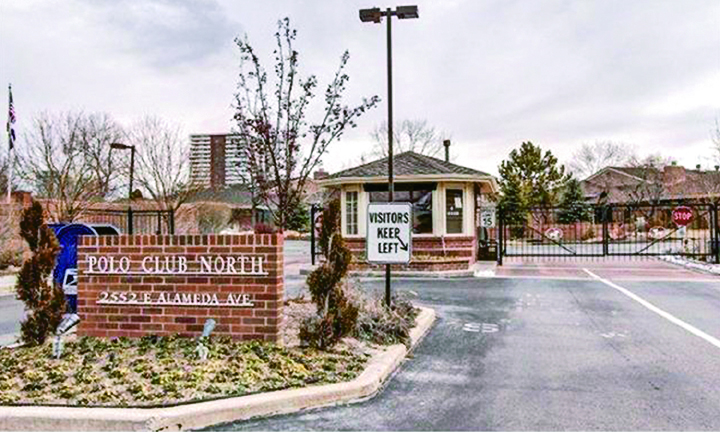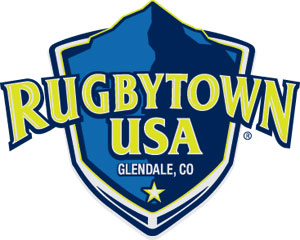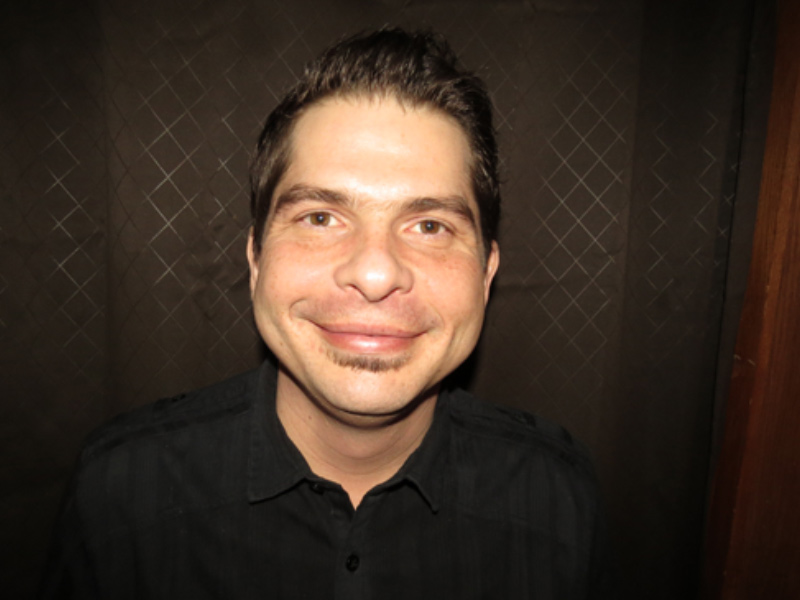
by Mark Smiley | Sep 29, 2014 | Main Articles
Frontier Renewal Will Finish Environmental Cleanup And Prepare The Site For Development
by Mark Smiley
 Denver-based Frontier Renewal closed on September 12, 2014, on the purchase of over 41 acres at the site of the former Gates Rubber Plant in Denver. The plant has been closed since 1991 with buildings on site ranging in date from 1918 through the 1950s. Frontier Renewal will finish the remediation and cleanup work, as well as prepare the site for vertical development.
Denver-based Frontier Renewal closed on September 12, 2014, on the purchase of over 41 acres at the site of the former Gates Rubber Plant in Denver. The plant has been closed since 1991 with buildings on site ranging in date from 1918 through the 1950s. Frontier Renewal will finish the remediation and cleanup work, as well as prepare the site for vertical development.
The Gates site includes three land parcels: the Broadway Parcel is 15.2 acres between the I-25 and Broadway light rail station and Mississippi along the west side of Broadway. The Santa Fe Parcel is 24 acres between I-25 and Mississippi Ave. along the east side of Santa Fe. The Vanderbilt Park Parcel is 2.5 acres between Tennessee and Vanderbilt Park along the west side of Santa Fe.
On October 1, 1911, Charles Gates Sr. purchased the Colorado Tire and Leather Company located in Denver, Colorado, beside the South Platte River. He paid $3,500 for a property that would one day become one of the world’s largest manufacturers of power transmission belts and a leader in hydraulic and fluid power products for industrial and automotive products. In 1919, the International Rubber Company changed its name to the Gates Rubber Company, and operated at the site from 1937 through 1991.
While at first a small enterprise producing “durable treads” made of leather intended to extend the life of the average automobile tire, the company quickly grew and in 1914 produced its first rubber tread. The growth that followed necessitated a new facility and the site at 999 S. Broadway was selected because of its relative proximity to downtown and because it was adjacent to the streetcar line and the railroad tracks, essential for the national distribution of Gates’ products. At the time south Broadway was still a dirt road and considered “suburban.” In the following five years the company added a warehouse, machine shop and more factory space. Growth continued through nearly the rest of the century, with increasing focus on international expansion. In 1995 the era of family-ownership ended when Gates became a wholly-owned subsidiary of Tompkins PLC, a London-based firm. While manufacturing no longer takes place in Denver, Gates continues to operate with its corporate headquarters in Lower Downtown.
In 2001, Cherokee Denver purchased the south Broadway property and created plans for mixed-use development. Cherokee investigated whether some preservation could be accomplished, but due to the unusual circumstances of the contamination, preservation was never guaranteed or promised. Ultimately the Denver City Council-approved General Development Plan did not include preservation elements, and in the aftermath of the 2008 economic crisis the Cherokee deal died and Gates reacquired the site.
Three years later, in 2012, Gates secured Certificates of Non-Historic Status, which are precursors to demolition permits. After months of controversy, a Denver City Council subcommittee voted, in September 2012, to halt efforts to consider the crumbing manufacturing plant one of the city’s historic landmarks. This action was despite a University of Colorado Boulder student asking the city to consider the buildings historic, a designation that would have prevented demolition.
In 2012, Eugene Elliott, presented the Denver Landmark Preservation Commission with a non-owner application and $250 filing fee to grant landmark status to the three oldest remaining structures: the manufacturing plant, known as Unit 10, plus the power plant and warehouse to the north of it. “The former Gates Rubber Company is a huge piece of Colorado and, more relevantly, Denver history,” Elliott said. “By not accepting the landmark-designation application, the owner will proceed to demolish the last remaining physical reminder of what Gates Rubber Company did and was for this city and its citizens.”
The application was denied. Council members cited the need to remove pollution buried under the old plant, and the desire of neighborhood groups living near the building to see it removed, as reasons for their votes. A few months later, the Denver City Council made changes to the city’s landmark ordinance and on December 4, 2012, the Department of Community Planning and Development raised the landmark application fee from $250 to $875. Some say this is to discourage people like Elliott from submitting applications to attempt to stymie the progress of developers.
Also in 2012, Historic Denver, a non-profit historic preservation organization located at 14th and Ogden, coordinated neighborhood meetings to encourage community input. As part of this discussion both Historic Denver and Gates brought forward ideas for consideration.
While many at the meeting were comfortable with the demolition plans, they also expressed great interest in the preservation of the Water Tower. The tower now sits on the ground on the west side of the property, but it was once the most iconic feature of the facility, defining the city’s skyline for South Denver.
As part of the conversations Gates had agreed to retain the Water Tower and keep it in a safe place on the property until plans can be made regarding its reuse, in total or in pieces, somewhere on the site or on adjacent public land, such as the RTD Light Rail Station. Historic Denver believes that the incorporation of this piece would contribute significantly to maintaining an authentic sense of place at the site.
Annie Levinsky, executive director of Historic Denver, said last year that she’d always hoped that the buildings could be saved. “We recognize that the contamination issues are a serious complication,” Levinsky said. “But we’ve always remained hopeful that they could be salvaged.” There is no word yet as to whether Frontier Renewal will retain the Water Tower for the planned development.
Denver Councilman Chris Nevitt, who represents the area, said in September 2013
that he held out hope that a developer might be able to use some of the buildings, but he added that his constituents are eager to see the old factory removed. As proven in 2012 with Elliott’s crusade, not everyone agreed with Nevitt. In September 2013, Gates secured demolition permits for the existing site. The original factory sat deserted on the corner of Broadway and Mississippi until November 2013, when demolition of the final factory buildings began.
Frontier Renewal will now prepare the site for future development. Frontier Renewal will maintain the existing ground water remediation system and will continue cleaning up the remaining contaminates. Frontier Renewal will also work with the City and County of Denver and take part in a community process to discuss the future of the site as Gates did in 2012. Once this work is complete, individual land parcels will be sold for vertical development. Renderings have not yet been submitted but it is widely speculated that the land will be used for apartments or condominiums.
“We are pleased to be selling this important property to a company with the skill and commitment to responsibly manage the environmental risks and ensure that the property is put to beneficial reuse in a manner that will make Gates, the City and other stakeholders proud,” said Tom Reeve, Executive Vice President and General Counsel, Gates Corporation.
“We are thrilled to be acquiring the former Gates site,” said Eric Williams, Chief Executive Officer, Frontier Renewal. “This project is a perfect fit for Frontier Renewal’s strengths: environmental clean-up, real estate development and public-private partnerships. And as Denver natives, we know the importance of this site in Denver’s history. We are looking forward to working with the city and community to create a bright new future for the site.“

by Mark Smiley | Sep 29, 2014 | Main Articles
$500 Fine For Cars On Driveway Overnight
by Glen Richardson

Polo Club North is a gated community with winding streets, open spaces with a stream, small ponds and waterfalls flanked by evergreens and aspens at South University Boulevard and East Alameda Avenue. A clubhouse contains an indoor swimming pool and outdoor tennis courts. Polo ponies cantered over the terrain here at one time. Owners paid immense sums to have garages instead of stables in this converted polo field. But the subject of automobiles has the well-to-do neighbors at each others throats with threats of lawsuits in the air.
The HOA Rules Committee in Polo Club North has proposed an astonishing new rule: To ban resident cars from being left in driveways overnight. The Committee attached a fine of $500 per violation after the second night. The HOA board looked poised to adopt the rule at a board meeting on September 23. However, due to outrage from occupants, the package of proposed rules changes was returned to the Rules Committee for additional deliberation.
John Leather who is helping to lead the opposition told the Chronicle, “If the sample of public opinion delivered at the meeting meant anything to the Rules Committee members present, they will drop the enforceable structure.” In addition to potentially major penalties, owners also worry that the rule would impair the marketing of Polo Club North homes to families, especially those with three cars. According to the Denver Neighborhood News the average sales price of a home in Polo Club area is just under $1.9 million.
Property Rights
In the apparent opinion of the members of the Rules Committee automobiles in driveways are a visual blight to their community. Automobiles are not allowed to be parked overnight on the private roads of Polo Club North. The opposition believes that the Rules Committee’s view of aesthetics is excessive and overblown with one irate homeowner blasting the Board declaring, “We are a community, not a commune.” Moreover, opposition owners believe these pad plazas or driveways are their property; and use of a driveway is a property right.
Upshot: In their view taking away the use of the driveway is taking away property. That, they argue would violate the Colorado Constitution. The HOA Rules Committee has three Colorado lawyers among its seven members, however, and apparently finds no role or weight for Section 14 of the Colorado Constitution’s Bill of Rights as it applies to private condemnation of a property’s use and benefit.
Section 14 states: “Private property shall not be taken for private use unless by consent of the owner, except for private ways of necessity, and except for reservoirs, drains, flumes or ditches on or across the lands of others, for agricultural, mining, milling, domestic or sanitary purposes.” None of those constitutional exceptions apply to the driveway ban, opponents believe.
Whether or not the constitutional exceptions apply, concerned neighbors note that a resident with a two-car garage — most everyone — but with three cars would immediately be impacted, and they will have to run fast from the $500 nightly hit. Ditto anyone with a vehicle too big to fit in the garage, or who has two cars but has used one bay of the garage for a workshop or other use. As one homeowner told the Chronicle, “The driveway use restriction can no more be justified than telling me I cannot use my patio after 9 p.m. Where is the HOA’s authority for taking part of either limited common element?”
Matter Of Beauty
A few residents — and rumor has it that at least one Board member — believe the Committee should consider restricted driveway use as a matter of “beautifying” the community, similar to use of no-plastic-patio-furniture. These beautification proponents say all aspects of driveway parking personally offend them.
“Thus far the Rules Committee is also clinging to the notion an overnight resident parking ban is without legal significance, and entirely defensible because its members think the result will look better,” stated opposition leader Leather.
The opposition also blasted the HOA board for limiting the hearing on the entire matter to only 15 minutes. They claim it was a rush to judgment to prevent discussion and debate.
There is no date set by the HOA Board for a re-hearing on the matter.

by Mark Smiley | Sep 29, 2014 | Glendale City News
by Marco Cummings
Writer for and on behalf of the City of Glendale

Casey Rock
The Glendale Raptors fell short of their summertime goals in 2014, falling a game short of Club 7s Nationals with a loss at the Omaha 7s qualifying tournament and falling short of hardware with a loss to the Northeast Olympic Development Academy with a 35-7 loss in the Plate (second tier) Final at the annual Serevi RugbyTown Sevens tournament hosted at Infinity Park.
Yet neither defeat was the biggest blow to the Raptors during a grueling 7s season. The team’s biggest loss was that of longtime team member Casey Rock to injury.
Suffering a blown knee in the Denver 7s tournament which started off the Raptors’ 7s campaign in 2014, Rock was tackled by an injury which not only prompted an early end to his season, but also forced the lock forward into a premature retirement from playing a game he has grown to love.
“I tore my LCL, MCL, ACL, patella tendon, all of my meniscus, and shredded all of the cartilage in my tibia and femur.” Rock said of the gruesome injury. “The doctor told me that because of all the bone damage, contact sports are done for me.”
Ironically, Rock’s injury came not from contact but from an awkward landing while chasing down an opponent.
An injury involving damage to the primary ligaments within the knee is sometimes referred to as an “unhappy triad” in the medical field, and for good reason.
“My spirits are pretty low,” Rock laments. “I wasn’t ready to stop playing and it’s been a real challenge to deal with that premature end to it all.”
At age 27, Rock seemed primed for many more seasons playing with the Raptors in both the 7s and 15s variations of Rugby. But it also ends the long journey he has experienced alongside the club, having joined the Raptors as one of the team’s original members back in 2006.
A Colorado native, Rock played both soccer and rugby at Denver’s East High School. In college, he focused on soccer with a scholarship to Metro State, but was lured back to Rugby when the Raptors began recruiting players at the club’s inception.
“I always thought that soccer players made a better transition to rugby because you’re used to running around for 90 minutes,” Rock explained. “You’re used to the game’s flow because soccer has so much change of direction and constant movement.”
His time with the Raptors eventually led to additional opportunities within the sport, including stints abroad with clubs in Australia and New Zealand as well as stints with the Collegiate All-Americans and USA Eagles. But his fondest memories remain with the Raptors.
“Winning the National Championship in 2011 was really fun,” Rock recalls. “We had a great team of guys that year. We had guys who weren’t necessarily stars but it was a great team.”
Rock continued his path to become a better rugby player while the Raptors became a bigger and better club.
“It’s been fascinating to watch the club grow. From being a 19-year-old practicing behind the Goodwill to playing for a Springbok legend in one of the greatest facilities in the Nation has been really great,” Rock said.
The “Springbok legend” Rock refers to is current head coach Andre Snyman. While Rock has only spent a few seasons under the South African, Rock explained that Snyman’s experience, particularly in the 7s game, had helped him become a more complete player.
“His knowledge of the game is so vast,” Rock said. “He’s really helped me develop my ball handling skills and vision for the game. I learned how to look at the game differently with him and see how the game was developing to put myself in a better place on the field.”
But even though Casey Rock’s time on the field has come to an end, he assures that he will continue to maintain a role with the Raptors and a relationship with the sport of Rugby.
Shortly after his injury, Rock was offered the position as coach of the Raptors Division II forwards. He’s also spearheading the movement to create an “Old Boys” organization for the Raptors. Not often seen with rugby clubs in the United States, an Old Boys organization is a way for former players to give back time and resources to their former club.
“Having played overseas, I’ve been part of clubs that have been around for hundreds of years. When guys retire they don’t just disappear. They tailgate or run a training session for the younger players. I see myself bringing the boys back in an organized fashion and being more visible,” Rock explained. “I feel really proud and humbled at how much the club still wants me around and to be involved.”
Outside of rugby, Rock has also gained time to focus himself on his new career as a first year language arts teacher for middle school students.
Unfortunately, no lesson plan could have prepared him for the challenges he has faced this summer while dealing with the devastating knee injury.
“The lesson I’ve learned is that all good things come to an end. It’s put some things in perspective for me. It’s reinforced the belief that you can’t spend all your time and energy on one thing.”

by Mark Smiley | Sep 29, 2014 | Editorials
Bob Coté the founder of the alcohol and drug rehabilitation center Step 13 was truly one of a kind as was the charity he founded. A former boxer from the mean streets of Detroit he knew what it was to be an alcoholic and homeless in Denver. He had been a white collar salesman who was able to hide his addiction for a while before spiraling down into alcohol dependence and hopelessness. He was at heart a “street fighting” man who took no gruff from anyone no matter how important or mean they were.
Having saved himself from addiction and despair he walked the alleys and byways of pre-yuppieized downtown Denver carrying a baseball bat searching for souls to save from the hell he personally knew all too well.
Even the name of the charity he founded “Step 13” was as idiosyncratic as its founder. It is almost universally initially assumed that it refers to a proposed next step after the 12 step program of Alcohol Anonymous, but instead it is homage to the original 13 colonies of America and Jesus and his 12 disciples. He quickly found out that modern American governmental agencies (federal, state and local) wanted absolutely nothing to do with any charity whose name was picked to honor patriotism and Christianity. They would do whatever they could to destroy a man who was quickly succeeding in making a real difference in lives of homeless drug and alcohol addicted men in Denver.
He said he knew what these men needed, as he had needed it so badly in his time of despair — “A hand up, not a hand out.” He wanted for those he helped what all men wanted (including himself) — dignity and self respect. He believed that only came from work and self reliance. He could never figure out why people like John Hickenlooper for all his purported concern about these men never got it. In his mind all that the Hickenloopers of the world offered these men was dependence and suffering or as he called “suicide by the installment plan.”
He viewed most of the members of the Denver City Council as “jackals” and “hyenas” who poured money into programs like the “Ten Year Plan to End Homelessness” (now known as “The Road Home”) which in his mind were simply bureaucratic sinecures for those who have never actually helped another human being in their entire lives. He viewed the Coalition for the Homeless as little more than the “Coalition to Exploit the Homeless” where the top personnel pay themselves handsome six figure salaries on the backs of the homeless.
That his charity Step 13 succeeded without ever taking any money from the government was amazing to him. He saw himself as a type of rough-hewed Forest Gump. More by accident than design he found businessmen like Bill Daniels and Cortlandt Dietler who were will willing to support and fund his vision while he worked tirelessly to make Step 13 a self-sufficient enterprise.
When he died last September replacing him seemed impossible. But the individuals who are on the Board of Directors had seen with their own eyes how Step 13 had literally saved men from their own destruction and that for such an organization to die while the harmful and invidious government funded programs lived on to exploit and destroy the lives of the humans they purported to help was too much to bear.
After months of fruitless efforts they found a man who seemed to be just the type of person they were looking for — Peter Droege. He was not in any sense a younger Bob Coté — that mold had been broken and thrown away when Coté came into the world.
Moreover, Peter Droege is most definitely not a “street fighting” man but rather the son of two artists who went to Central City to escape the real world and open up a gi ft shop to display and sell artistic items. He attended the University of Wyoming and then headed out to California to be a journalist in Los Angeles. He returned to Colorado to work on various local publications. He joined the Daniels Fund, the billion dollar legacy of cable pioneer and Step 13 supporter Bill Daniels, where he rose to Vice President of Communications before coming over to Step 13 as its executive director.
ft shop to display and sell artistic items. He attended the University of Wyoming and then headed out to California to be a journalist in Los Angeles. He returned to Colorado to work on various local publications. He joined the Daniels Fund, the billion dollar legacy of cable pioneer and Step 13 supporter Bill Daniels, where he rose to Vice President of Communications before coming over to Step 13 as its executive director.
Droege has had his own battles with “demon rum” and knows what addiction can do to you. He met Coté in 2001 and helped co-chair the 25th Anniversary of Step 13 held at Infinity Park just prior to Coté’s death.
Bob Coté made it abundantly clear to you whether he liked you or not. His magnetic personality attracted many people, but he also repelled more than his share of individuals sometimes unnecessarily. He just couldn’t help himself when he found himself in the presence of someone he believed to be a self important phony whether or not the person could have been of great aid to his enterprise.
Peter Droege on the other hand is a uniter. Quickly after meeting him, he makes you feel that you have known him your entire life and the two of you are the closest of friends. His infectious, positive enthusiasm makes you feel that just about anything can be accomplished.
He has already made important alliances including one with Goodwill Denver. He has adopted as his own the mantra “Get a job, get a better job, get a career.” He believes to his core, like Coté before him, that finding jobs and careers for the men who Step 13 assists is the key to making them whole again. Goodwill Denver’s Career Connection Centers are one-stop shops for career developments that work perfectly with Step 13’s mission.
He has also been successful in getting more and more people to contribute cars, boats, motorcycles etc. to Step 13 for them to repair, fix and resell while making sure the donor gets the highest allowable tax deduction for his or her donation.
The unique Step 13 organization appears in good hands with Droege, although when you refuse all governmental funds you are constantly going to be challenged in obtaining necessary funding.
If you want to give to a charity to make yourself feel good there are lots of organizations out there with which you can accomplish your goal. If you want give to an organization that really does make a life-changing difference in the lives of others, Step 13 has proved to be just such a charity, first under Bob Coté and now under Peter Droege.
— Editorial Board

by Mark Smiley | Sep 29, 2014 | Feature Story Bottom Left
It’s sad that I have to start out my column this month by warning those of you who are easily offended or so politically correct minded that this article may upset you. If you are either of those types just do us all a favor and stop reading now. For the rest of you, carry on!
This month I have been doing a lot of self-reflecting about some of the different “types” of women I have dated over the years and I thought it would be fun to illustrate a few examples. Please keep in mind I have dated and been in relationships with well-adjusted women who don’t fall into any of the categories that I have created. But let’s face it, writing about those women would just be plain boring to read. Also keep in mind I am not singling out women just to single them out. The fact of the matter is that I am not homosexual and my dating experiences come from women, plain and simple. So ladies, I am sure you have some “types” of guys that you and your girlfriends have labeled as well and I would love to hear about them and include them in my next column if you email me at the moderndater@gmail.com.
and my dating experiences come from women, plain and simple. So ladies, I am sure you have some “types” of guys that you and your girlfriends have labeled as well and I would love to hear about them and include them in my next column if you email me at the moderndater@gmail.com.
Ok, now let’s get to the good stuff. Here are a few “types” of women that I have dated. Remember some women may possess a bit of each one of these but I am going to break them down by naming them individually.
Ms. Damaged Goods: This poor soul has been wrecked by life and relationships and she has no idea where to begin picking up the pieces. By nature she is sweet to a fault and that is a huge component to why she is so damaged. Personally I am touched by these women because my heart wants them to feel healed and ready for life but in my experience it is too hard to help them without it affecting my life in an adverse way.
The Daughter: Ok, now don’t be a perv, this is not an incestuous situation. Let me explain. Many men, including myself, like to date women our junior for many reasons. I’ll save that explanation as to why for an entirely different article. I have always said I feel like I raised three or four different women because it is natural for me to share my life experiences with them when I see them making obviously poor choices that I have already gone through in hopes that I can spare them some aggravation from making the same mistakes. Needless to say this is never good in the long run because the roles turn into more of a Father — Daughter relationship than an equal partnership. It’s fun in the beginning though!
The Mother: God bless this woman. Every man loves a caretaker and the mothering type does a great job. She is there for support, advice, stability and just great for an overall soft place to land. The only problem is I’m not physically attracted to you, but I do like the comfort so I have to be careful dating this type when I see it working toward that role.
The Man Hater: Guys, you know this woman. This lady has to have a man in her life yet she hates every one of us and she isn’t afraid to vocalize it. I think the Man Hater started out as Ms. Damaged Goods and just never put it together.
The Man Eater: I find this woman all the time, probably because she’s a challenge. This woman has it together and knows she can play men like a fiddle. She is smart, sexy, and secure in herself and puts out a “I don’t need you” energy and she usually gets whatever she wants when she wants it no matter what she has to do to make it happen.
The Stalker: What can I say about the Stalker that you don’t already know? Just because you eliminated her from your life doesn’t mean she’s gone, in fact, she’s everywhere. She combs through your social media to try and stay up on who you associate with and what you’re doing, she tries to remain in contact with your friends, she makes sure to pop in on you via text, phone and email even though you’ve made it clear you don’t want further contact. This can actually be a very scary thing to deal with.
The Groupie: The ladies are actually very sweet. I don’t care if you’re in show biz or not we’ve all had a groupie. This girl adores you and you can do no wrong and is similar to “Couch Girl” who I’ve written about in the past. She is just a fan of you and she will do just about anything you ask. Don’t mistake her for the Stalker because she actually has your best interest in mind. Be good to her.
The Man Molder: This woman is not dating to find you; she’s dating to find someone who fits an idea in her mind. I have been seeing quite a few of these women as of late for some reason. Whatever notion of where she should be in her life is what she is after. She may be ready to be married or have kids or just have a man to have a man. Forget getting to know each other, whatever is in her mind is what she will want you to be regardless of who you are or what you want. This woman scares the bejeezus out of me.
I could keep this going forever but my column is only allowed to be so long so I have to stop here. I do want to hear about the types of people you date, man or woman, just email me! Lastly don’t forget about my new Modern Dater Club where viable Colorado daters meet up to go on fun excursions together that are prearranged and hosted by me. The first outing will start with a happy hour and then a limo ride to a cooking school where singles pair off and rotate while we assemble a feast that we will all partake in at the end. Super excited to introduce “Circle Cooking” to you and if you would like more info on how you can be a part of this exclusive club just email me or hit me up on www. the moderndater.com. See you there!
Your pal, Sheik

 Denver-based Frontier Renewal closed on September 12, 2014, on the purchase of over 41 acres at the site of the former Gates Rubber Plant in Denver. The plant has been closed since 1991 with buildings on site ranging in date from 1918 through the 1950s. Frontier Renewal will finish the remediation and cleanup work, as well as prepare the site for vertical development.
Denver-based Frontier Renewal closed on September 12, 2014, on the purchase of over 41 acres at the site of the former Gates Rubber Plant in Denver. The plant has been closed since 1991 with buildings on site ranging in date from 1918 through the 1950s. Frontier Renewal will finish the remediation and cleanup work, as well as prepare the site for vertical development.







 ft shop to display and sell artistic items. He attended the University of Wyoming and then headed out to California to be a journalist in Los Angeles. He returned to Colorado to work on various local publications. He joined the Daniels Fund, the billion dollar legacy of cable pioneer and Step 13 supporter Bill Daniels, where he rose to Vice President of Communications before coming over to Step 13 as its executive director.
ft shop to display and sell artistic items. He attended the University of Wyoming and then headed out to California to be a journalist in Los Angeles. He returned to Colorado to work on various local publications. He joined the Daniels Fund, the billion dollar legacy of cable pioneer and Step 13 supporter Bill Daniels, where he rose to Vice President of Communications before coming over to Step 13 as its executive director.
